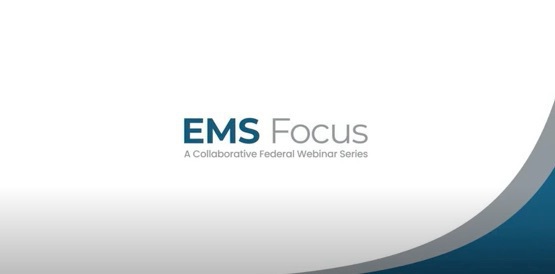Reporting Ambulance and Equipment Defects Can Improve Safety
Recent webinar featuring experts from NHTSA highlights need for EMS community to share information about problems with ambulances
Ambulance crashes can have tragic consequences for EMS clinicians, patients and members of the public. According to data collected between 1992 and 2011, an estimated 4,500 crashes involving ambulances occur each year, with about one-third resulting in injuries, including more than 30 deaths annually.
One way to prevent future crashes and other potentially dangerous situations is to make sure any problems with ambulance design or construction are reported so investigators can determine if further actions, such as modifications or recalls, are required. That’s the goal of the NHTSA Office of Defects Investigation. During a recent EMS Focus webinar, Peter Kivett, a safety defects engineer with the office, described the program and called on the EMS community to communicate any potential problems with NHTSA.
“The only way we can move forward on any issue is if we get information from the public,” Kivett said. “Receiving defect information directly from EMS personnel in the field allows us to quickly disseminate that data and open an investigation.”
The webinar also featured Harold Herrera with the NHTSA Special Crash Investigation Program, which produces in-depth reports on crashes that focus on determining the cause and identifying ways to prevent similar incidents in the future.
Identifying and Mitigating Defects
NHTSA’s Office of Defects Investigation’s goal is to identify design or manufacturer defects and ensure they are remedied effectively. The Office of Defects Investigation relies on data collected from the EMS community reported using its NHTSA Consumer Vehicle Complaint Process. After receiving those reports, the office can investigate further to determine if the problem is widespread or limited to one instance.
While many people might associate the program with massive recalls reported in the media, the range of types of issues investigated by the office is much broader. Its experts examine safety-related ambulance defects in performance, design, construction component or material that potentially create an unreasonable risk of death or injury in an accident. The determined defects are then analyzed using a risk matrix to prioritize the need for an investigation. Investigations are not limited to the vehicle chassis but can also extend to any part of the vehicle or even equipment that is attached to the vehicle, such as ambulance stretchers, Kivett explained.
Once a complaint is opened, the Office of Defects Investigation engineers work with the manufacturer to understand the issue in more detail with the goal of finding the most effective ways of correcting any possible threats to operators’ or passengers’ safety.
The NHTSA Crash Investigation Division
Like the Office of Defects Investigation, NHTSA’s Special Crash Investigations Program focuses on preventing further injury or harm caused by traffic crashes. For nearly half a century, the program has investigated crashes that meet its case selection criteria, including those involving ambulances and other public safety vehicles.
Each investigation involves working closely with leadership from the EMS organization involved in the incident and results in a detailed report focused on identifying the nature of the crash and how to avoid similar crashes in the future. The reports remove all identifying information.
“It’s crucial for the EMS community to notify us of crashes, but it’s the cooperation of the agencies that makes all the difference,” said Herrera, team lead for the Special Crash Investigations Program. “Inspecting the ambulances and speaking to personnel involved in the incident allows us to gather the critical data.”
Information on how to report crashes can be found on the program’s website. You can also work with your state EMS office or the NHTSA Office of EMS to notify NHTSA’s investigations team.
The criteria for determining ambulance crash investigations includes the following factors, among others:
Ambulances in traffic
Potential survivable crashes
Fatal injuries in the ambulance
Cot retention failures
Incapacitating injuries in patient compartment
Hospitalizations for crash related injuries
Patient ejections from ambulances
Ambulance rollovers
EMS personnel fatigue
Ways to Help Ensure Ambulance Safety
During the webinar, Kivett and Herrera further described their programs and continued to emphasize that their work largely relied on members of the public and, more specifically, the EMS community. Without information from the field—including organization leaders, individual clinicians, and support staff, such as fleet managers—it’s much more difficult for NHTSA to investigate issues and engage with manufacturers to correct safety concerns. It’s also important to stay informed of recalls and findings that result from the concluded investigations.
To find out more about NHTSA’s efforts on ambulance safety, including links to the Office of Defects Investigation and Special Crash Investigation Program websites and reporting tools, visit the Ambulance Safety page on EMS.gov. There you’ll also find a recording of the webinar and other resources.
